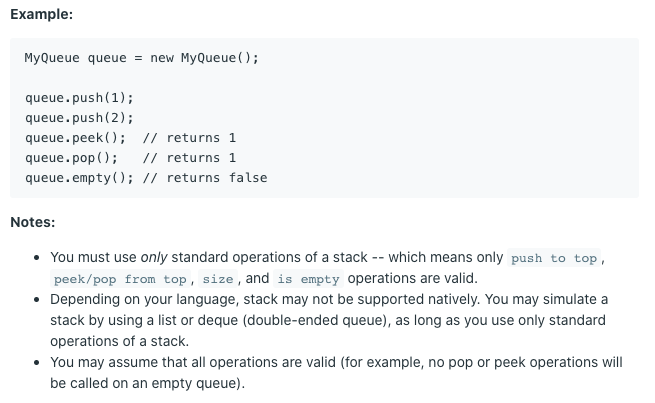232. Implement Queue using Stacks
Problem
Implement the following operations of a queue using stacks.
- push(x) -- Push element x to the back of queue.
- pop() -- Removes the element from in front of queue.
- peek() -- Get the front element.
- empty() -- Return whether the queue is empty.
Example

Solution
class MyQueue:
def __init__(self):
"""
Initialize your data structure here.
"""
self.input = []
self.output = []
def push(self, x: int) -> None:
"""
Push element x to the back of queue.
"""
self.input.append(x)
def pop(self) -> int:
"""
Removes the element from in front of queue and returns that element.
"""
self.peek()
return self.output.pop()
def peek(self) -> int:
"""
Get the front element.
"""
if not self.output:
while self.input:
self.output.append(self.input.pop())
return self.output[-1]
def empty(self) -> bool:
"""
Returns whether the queue is empty.
"""
return self.input == [] and self.output == []- Queue를 이용한 Stack 구현과는 다르게 마지막요소부터 끄집어내야되는 문제여서 2개의 스택을 만들었다.
peek()함수와pop함수는 결국 같은 값을 끄집어내는 함수여서 pop()함수를 호출할때 peek()함수를 호출하고 이곳에 재입력하는 알고리즘이다.- 즉, 가장먼저 입력된 값을 호출하기 때문에 입력된 값이 없다면 peek()함수에서 푸쉬한 입력한값을 다시 재입력한다 (그래서 시간복잡도는
O(1))
